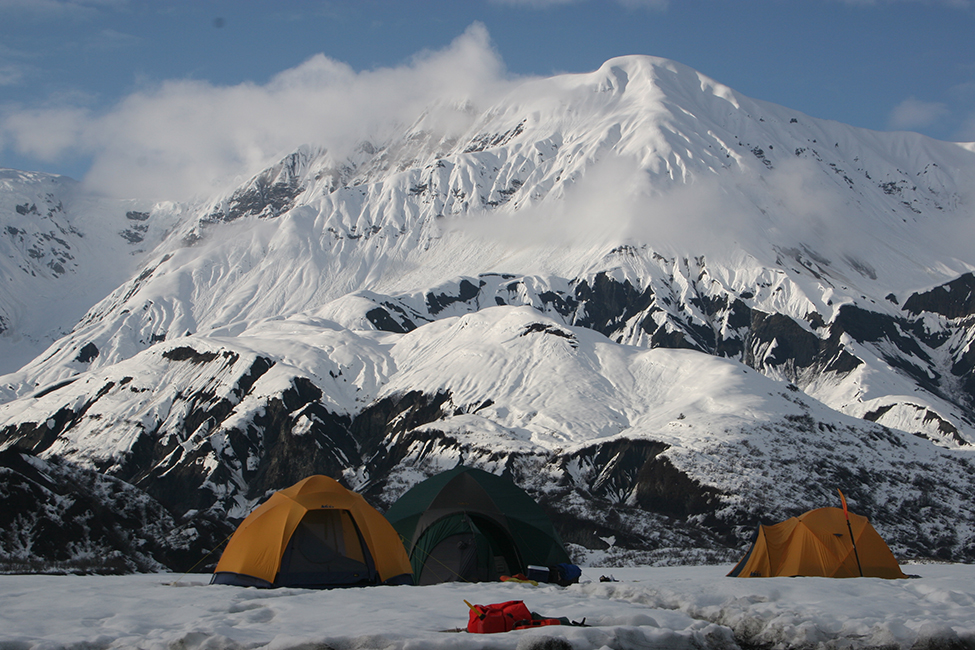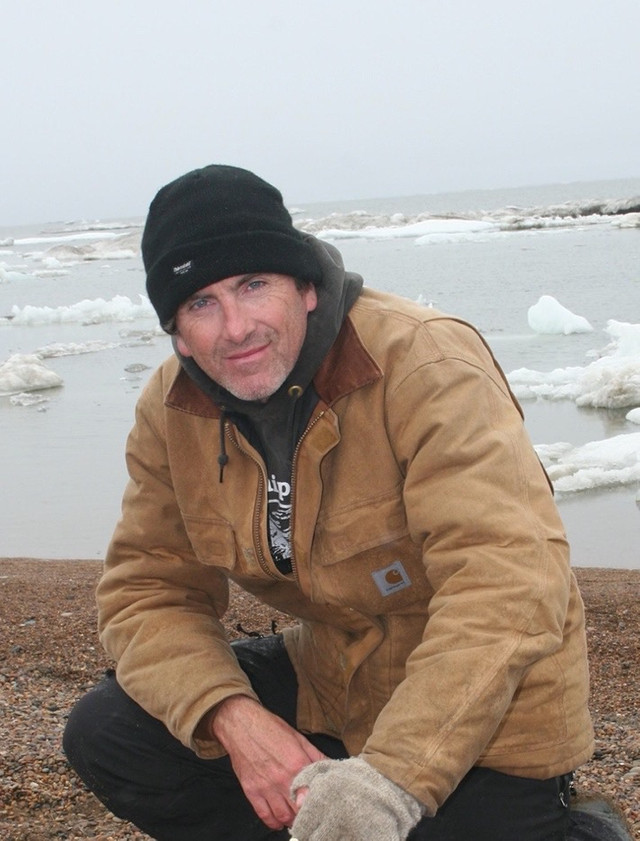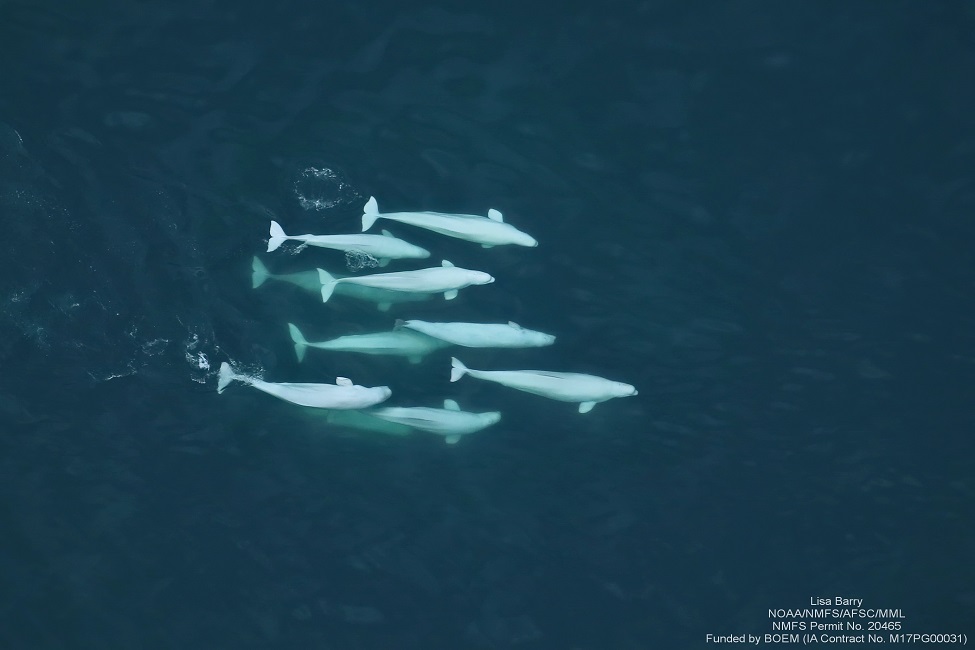LIFE ON THE EDGE
by Bethany Augliere | Monday, Jan 04, 2021
 Greg O’Corry-Crowe, a biologist at FAU’s Harbor Branch Oceanographic Institute, is no stranger to life on the edge, much like the animals he has dedicated his life to studying — beluga whales. He’s endured remote wilderness and freezing temperatures to study these marine mammals at the farthest corners of the world.
Greg O’Corry-Crowe, a biologist at FAU’s Harbor Branch Oceanographic Institute, is no stranger to life on the edge, much like the animals he has dedicated his life to studying — beluga whales. He’s endured remote wilderness and freezing temperatures to study these marine mammals at the farthest corners of the world.
As a postdoctoral scientist in 1998, Greg flew to the remote Somerset Island in the Canadian Arctic to a seaside camp, in hopes of glimpsing the whales for his research. After a few days of waiting, he woke up one morning to thousands of belugas in the small bay, socializing, chirping and splashing. “It was almost overwhelming,” he said. “It was epic.”
That was just the beginning. After more than 20 years, he’s still discovering new secrets about their lives.
Belugas are small white whales, reaching lengths up to 14-feet, found globally throughout the Arctic Ocean in the Northern Hemisphere, including in the U.S. in Alaskan waters. They’re highly social mammals with an extensive repertoire of sounds for communication, earning them the nickname “canaries of the sea.”
Recently, Greg has used a combination of genetic techniques, satellite-tagging and indigenous knowledge to uncover surprising new details about their social lives and culture. He defines culture as “knowledge or behavior shared within that group, or society of animals, which is acquired from conspecifics through some sort of social learning.”
Along with an international team of collaborators, he’s found that populations of whales return to the same locations, year after year, and even generation after generation. That knowledge is probably passed down from mother to offspring. And while researchers have long-believed that belugas were similar to orcas and sperm whales, existing in very small family groups, belugas are actually more similar to humans, with large expanded social networks.
About 130,000 belugas live in the wild. And while the species is not endangered globally, certain populations are at risk. The population in Alaska’s Cook Inlet, for instance, is endangered and the Russian stock from the Sakhalin Bay-Nikolaya Bay-Amur River region is depleted.
These animals face increasing threats due to human activity, such as changing environmental conditions, entanglement in fishing gear, noise pollution from shipping traffic and seismic surveys for gas and oil exploration, and capture for the international aquarium industry.
Understanding the culture of these whales is just one more piece to the puzzle when it comes to conservation. For instance, based on their culture and learning, how might the whales respond to changing environmental conditions — will they return to the same locations, even if they are inhospitable?, Greg asked. For that reason, he plans to study how quickly learning can occur and new behavioral innovations spread.
And in a time of increasing pressure on the environment, his research is especially important because “what happens in the Arctic today, happens in Florida tomorrow,” said Greg,
who recently became a National Geographic Explorer to continue this research.
“If we are going to protect these marine mammals for future generations, we need to intimately know how they live in their ocean environments,” said Jim Sullivan, Ph.D., director of FAU’s Harbor Branch. “This critical research not only provides these answers, but also important information about how their populations are currently faring due to manmade threats.”
“It’s been very humbling to see an animal that I think to a lot of people are sort of small and lovable, be such a fierce and impressive species,” he said. “They don't just dive, they are supreme divers, they don't just go under the ice, they go under hundreds of miles of ice. It seems that everything they do is very extreme ...they have perfected life on the edge” For Greg, “it’s a lifelong love affair with beluga whales.”
Watching Wild Belugas

To glimpse belugas in the wild is no easy feat, but there are few places to view the whales responsibly, said Greg.
From June to September, approximately 3,000 of these white whales visit the Churchill River basin in Manitoba, Canada and approximately 60,000 come into the Hudson Bay area as the ice melts, migrating from their winter grounds to moult, calve, feed and seek protection from predators, like orcas and polar bears.
The Saint Lawrence Estuary in Canada’s Quebec Province, is home to a small population of belugas — fewer than 1,000 — that exist at the southernmost extent of the species’ range. Quebec is another place to view belugas close to shore, with a booming whale-watching industry, including guided boat tours or kayak trips.
Unlike other migratory populations, these whales call the estuary home year-round, and use different regions depending on the season. However, being so close to humans, the Saint Lawrence Estuary belugas face unique threats, including cancer likely due to environmental contaminants, according to the work of biologist Daniel Martineau.
In the U.S., people can view belugas in Cook Inlet outside Anchorage, Alaska. “You can drive along the highway, pull-off, and hope you see them,” said Greg. In fact, there’s a place along the Seward Highway called Beluga Point, because whales are often spotted from this location. They are typically seen from mid-July through August when salmon are running in Cook Inlet.
The Cook Inlet belugas are listed as endangered under the U.S. Endangered Species Act. Their population numbers were estimated at 269 individuals in 2018 and have been experiencing an ongoing decline for more than two decades, according to the U.S. Marine Mammal Commission.